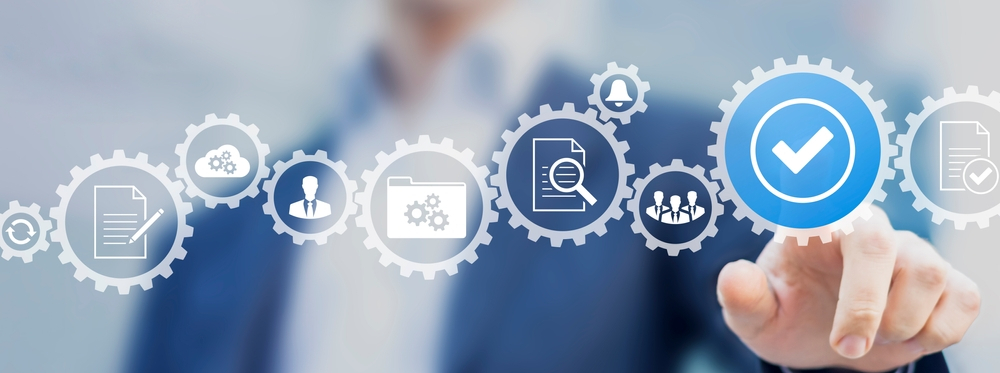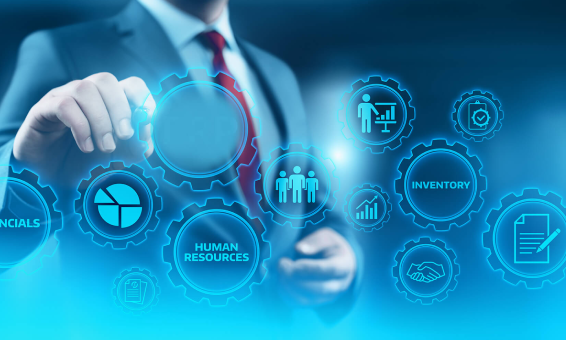What Is Enterprise Resource Planning? A Beginner’s Guide
Are you looking to improve the way your business operates? One of the best strategies is to use enterprise resource planning (ERP). ERP systems are designed to help a company optimize their production, customer service, and financial management. From understanding the basics of an ERP system through setting up one in your company, this beginner’s guide will give you all of the information you need about using this incredibly powerful tool. Get ready to learn what is Enterprise Resource Planning and how you can streamline your operations with an ERP!
What is Enterprise Resource Planning (ERP)?
Enterprise Resource Planning (ERP) is a business process management software that allows an organization to utilize a system of integrated applications to manage the business and automate many back-office functions related to technology, services, and human resources. It integrates all facets of an operation, from product planning, development, manufacturing, sales, and marketing, into a single, cohesive system. In essence, ERP provides a global, real-time view of data that can enable companies to address concerns proactively and drive improvements.

Benefits of Using ERP Systems
Implementing an ERP system can provide a multitude of benefits to businesses of all sizes. Here are a few key advantages:
- Increased Efficiency: ERP systems eliminate repetitive processes and significantly reduce the need to manually enter information. This enhancement leads to an increase in overall productivity.
- Consistent Workflow: Across various departments, a well-integrated ERP system promotes collaborative, streamlined workflow. Information is accessible for every department, creating a unified, coherent work environment.
- Cost Reduction: With streamlined business processes, organizations can reduce operational and administrative costs. An ERP system helps businesses make informed, strategic decisions that ultimately save money.
- Improved Customer Service: By centralizing client information, ERP systems enhance the quality of customer service. Sales and customer service teams can access customer information faster, facilitating interactions and improving relationships.
- Data Security: ERP systems provide higher-level security as they offer users the ability to design their own customized user permissions. Ensuring data integrity and privacy is a cornerstone of most ERP systems.
ERP systems allow businesses to have a more accurate and complete view of their operations, which can lead to better decision-making and increased productivity.
How to Choose the Right ERP System
When choosing the right Enterprise Resource Planning ERP system for your business, there are several key factors to consider:
- Understanding your business needs: Before diving into the search for an ERP system, it’s critical to have a thorough understanding of your business requirements, future goals, and the challenges you might face. By doing so, you’ll be able to identify the features and functionalities that are most important to your business.
- Scalability: Choose an ERP system that is scalable and can grow with your business. It should be able to accommodate new users and adapt to changes in business processes over time.
- User-Friendly Interface: An ERP system should have an intuitive, user-friendly interface. This will ensure quick adoption by your team and will reduce training time and costs.
- Vendor Reputation and Support: Research the ERP vendor’s reputation in the market. Look for reviews or case studies that might indicate their reliability, customer support, and how they handle updates and improvements to the system.
- Cost: ERP systems can range in price, so it’s important to find a system that fits within your budget. However, don’t just go for the cheapest option. Consider the return on investment (ROI) and the potential value the system could bring to your business.
- Integration Capabilities: Your ERP system should be able to integrate with your existing software. This will ensure data consistency across different departments and improve efficiency.
Choosing the right ERP system involves a careful analysis of your business needs and a detailed assessment of the solutions available in the market. Always remember to take your time in this process to ensure you’re making the best decision for your organization.

Preparing Your Business for an ERP Implementation
Before the ERP implementation begins, your business needs to be adequately prepared to ensure a successful transition. Here are some steps to follow:
- Define Clear Objectives: Identify what you want to achieve with the ERP system. It could be improving process efficiency, reducing costs, or boosting customer service. Clear objectives will guide the implementation process and help measure the success of the new system.
- Assemble an Implementation Team: Gather a team comprising members from different departments. This team will lead the implementation process, ensure everyone’s needs are met, and facilitate intra-departmental communication.
- Cleanse Your Data: Data cleansing is crucial before migrating it to the new system. Make sure your data is accurate, complete, and formatted correctly. This will ensure that your new system works effectively and provides reliable insights.
- Train your Staff: A new system means new processes. Ensure that all users are trained well on how to use the new ERP system. This can be done through workshops, seminars, or hands-on training sessions.
- Plan a Gradual Rollout: Instead of a complete switch-over, plan for a gradual rollout. This will allow users to adapt to the system gradually and will ensure that the business continues to run smoothly during the transition period.
In essence, preparing for an ERP implementation might seem intimidating, but with careful planning and preparation, the transition can be seamless. Remember, the goal of implementing an ERP system is to streamline processes and increase efficiency, so keep these objectives in mind throughout the preparation process.
Tips for a Seamless ERP Implementation
Implementing an ERP system can be a complex task, but with the right approach, it can be managed smoothly. Here are some tips for a seamless ERP implementation:
- Strong Leadership: A successful ERP implementation requires strong leadership to drive the project. This includes appointing an experienced project manager who can coordinate between the ERP vendor and your organization, resolve issues, and ensure the project stays on track.
- Effective Communication: Keep all stakeholders informed about the progress, changes, and potential issues during the implementation process. Transparent communication helps manage expectations and ensures everyone is on the same page.
- Continuous Testing: Regular testing at every phase of the ERP implementation is crucial. This helps catch and correct errors early, preventing them from becoming major issues down the line.
- Post-Implementation Review: After the ERP system is live, conduct a post-implementation review to evaluate the project’s success and identify areas for improvement. This review will provide valuable insights for future projects.
By following these tips, organizations can improve their chances of a successful and seamless ERP implementation, leading to better business efficiency and productivity.

The Difference Between On-Premise and Cloud-Based ERPs
When choosing an ERP system, one of the major decisions businesses face is whether to go for an on-premise or a cloud-based solution.
On-Premise ERP systems are installed locally on your company’s hardware and servers and then managed by your IT staff. This gives you full control over the system and its security. However, it comes with high upfront costs for the software and hardware purchase, installation, and ongoing maintenance.
On the other hand, Cloud-Based ERP systems are hosted on the vendor’s servers and accessed through the internet. This model reduces the need for a large upfront investment as it typically follows a subscription-based pricing model. It also minimizes the burden on your IT staff since the vendor takes care of all updates, maintenance, and security. The main drawback, however, could be less control as the data is stored on the vendor’s servers.
In conclusion, the choice between on-premise and cloud-based ERPs depends on your business needs, financial resources, and technical capabilities. Understanding the differences between the two can help you make an informed decision that best aligns with your business strategy. Keep in mind that an ERP system is a long-term investment, so it’s important to choose the right model for your organization.
